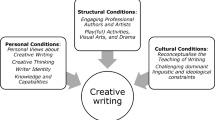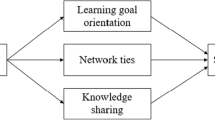Abstract
The purpose of this paper is to describe a way of teaching business ethics using the creative arts, especially literature and theater. By drawing on these disciplines for both method and texts, we can more easily make the connection to business as a fully human activity, concerned with how meaning is created. Students are encouraged to understand story-telling and narrative and how these tools lend insight into the daily life of businesspeople. The paper describes two main courses, Business Ethics Through Literature and Leadership, Ethics and Theater, and the rationale for each. We begin by suggesting three main leverage points that the courses engender. We then rely on the words of students who have taken the courses for insights into what they learned. We then critically assess some of the principles that have informed course design over time. We conclude by suggesting that paying attention to the creative arts gives rise to a rather different approach to business ethics, one grounded in the pragmatist tradition in philosophy.
Similar content being viewed by others
Notes
There is also a 6 week version of the course. The following website is a resource about the course, and there is a documentary that focuses on what the student experience is. See: http://it.darden.virginia.edu/leadershipandtheater/.
References
Benhabib, S. (1992). Situating the self. Gender, community, and postmodernism in contemporary ethics. New York: Routledge.
Burns, J. M. (1978). Leadership. New York: Harper & Row.
Dewey, J. (1957). Reconstruction in philosophy. Boston: Beacon Press.
Dunham, L., & Freeman, R. E. (2000). There is business like show business. Organizational Dynamics, 29(2), 108–122.
Freeman, R. E., & Newkirk, D. (2011). Business school research: Some preliminary suggestions. In W. Amann, M. Pirson, C. Dierkmeier, E. Von Kimakowitz, & H. Spitzeck (Eds.), Business schools under fire: Humanistic management education as the way forward (pp. 273–290). London: Palgrave.
Mintzberg, H. (2004). Managers not MBAs: A hard look at the soft practice of managing and management development. San Francisco: Berrett-Koehler.
Pfeffer, J., & Fong, C. T. (2002). The end of business schools? Less success than meets the eye. Academy of Management Learning and Education, 1(1), 78–95.
Author information
Authors and Affiliations
Corresponding author
Rights and permissions
About this article
Cite this article
Freeman, R.E., Dunham, L., Fairchild, G. et al. Leveraging the Creative Arts in Business Ethics Teaching. J Bus Ethics 131, 519–526 (2015). https://doi.org/10.1007/s10551-014-2479-y
Received:
Accepted:
Published:
Issue Date:
DOI: https://doi.org/10.1007/s10551-014-2479-y




